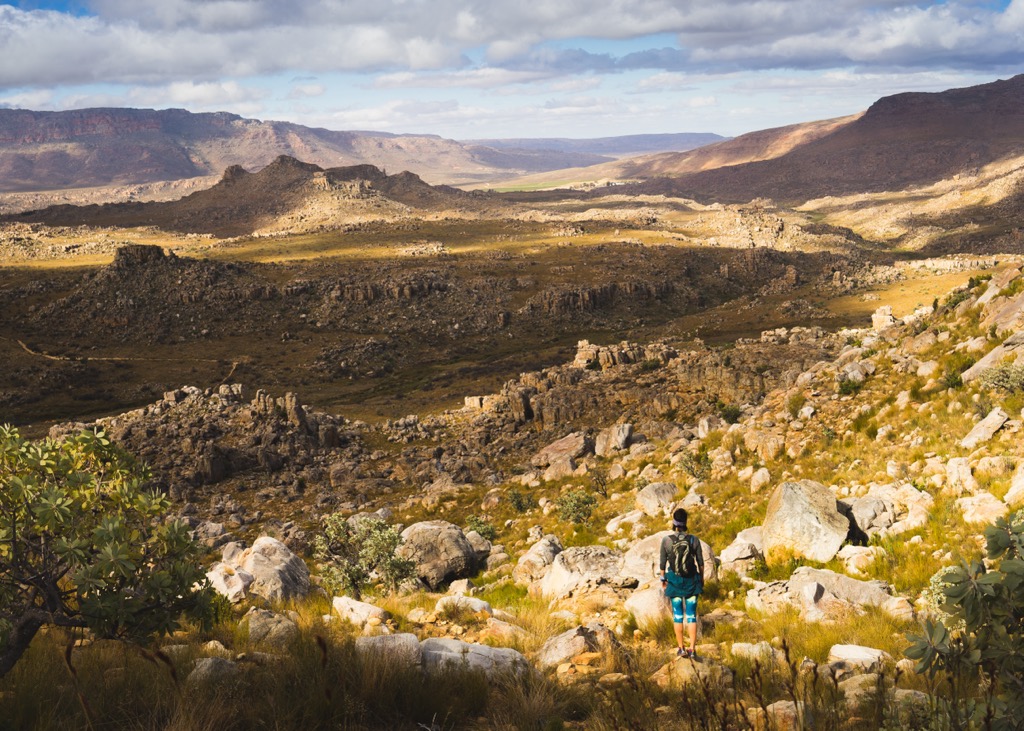Get PeakVisor App
Sign In
Search by GPS coordinates
- Latitude
- ° ' ''
- Longitude
- ° ' ''
- Units of Length

Yes
Cancel
Share ×

Scan the QR code and open PeakVisor on your phone
❤ Wishlist ×
Choose
Delete
The Cederberg is a small mountain range in South Africa. Its perch north of Cape Town makes it one of the country's more trafficked natural areas. There are 132 named mountains in the Cederberg; the highest and most prominent is Sneeuberg, measuring 2,026 meters (6,647 ft).
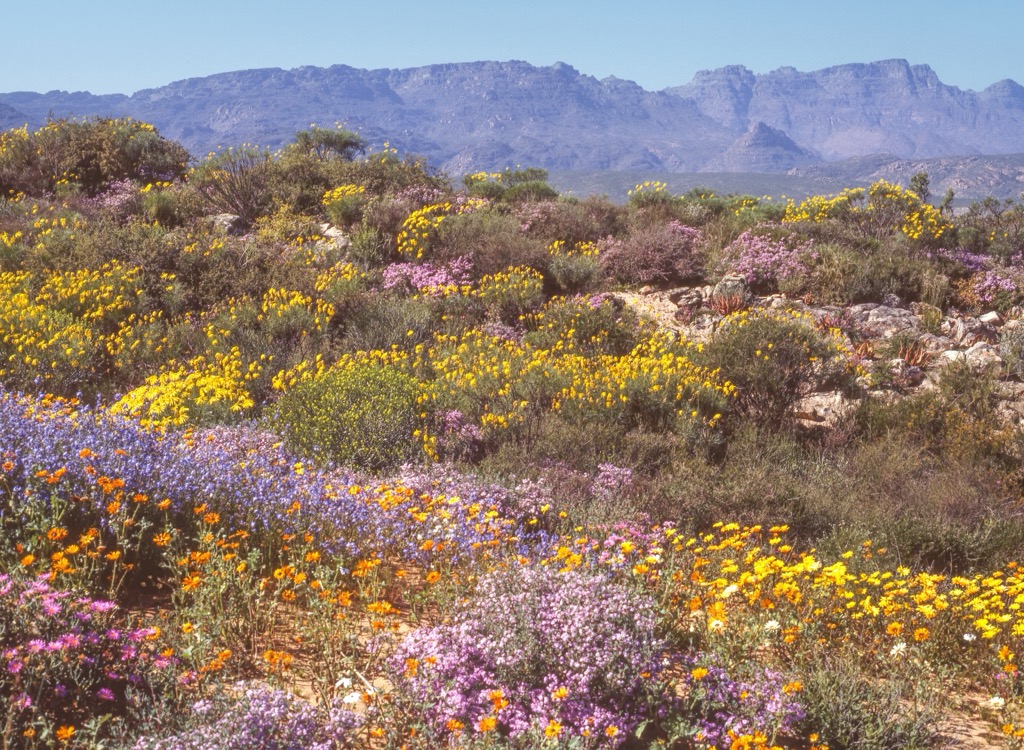
The Cederberg is a rugged region in the Western Cape province that extends for about 50 km (31 mi) from north to south and 20 km (12 mi) from east to west. It’s bordered by the Sandveld, a coastal plain, on the west, the Pakhuis Mountains on the north, the Tankwa Karoo National Park on the east, and the Bokkeveld Mountains on the south.
The range is composed of soft sandstone; dramatic rock formations have developed through weathering and erosion over millions of years. The most famous landmarks include the Wolfberg Arch, the Maltese Cross, and the Wolfberg Cracks. The mountains are encompassed by two natural areas of the same name: Cederberg Conservation Area and Cederberg Wilderness Area.
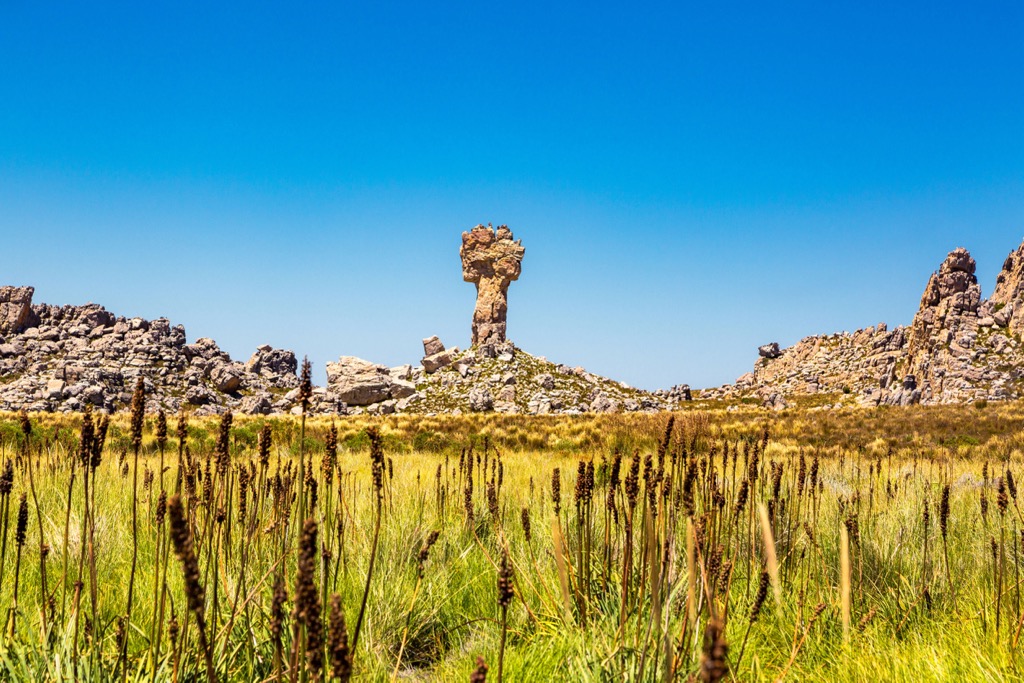
The Cederberg is part of the Cederberg Wilderness Area, which covers 71,000 ha (175,445 ac) of land. It is a popular destination for hiking, camping, rock climbing, and stargazing. The wilderness also showcases the region’s geological and cultural history through sandstone formations and cave art.
In summer, the Cederberg experiences scorching temperatures of up to 40°C (104°F), while in winter, average temperatures plummet to 4°C (39°F). The winter also marks the start of the rainy season, with an average annual rainfall of 700 mm (28 in).
The arid climate promotes a rich biodiversity in the Cederberg with two major biomes: the Fynbos, a shrubland with many endemic plants, and the Succulent Karoo, a semi-desert with many succulent species.
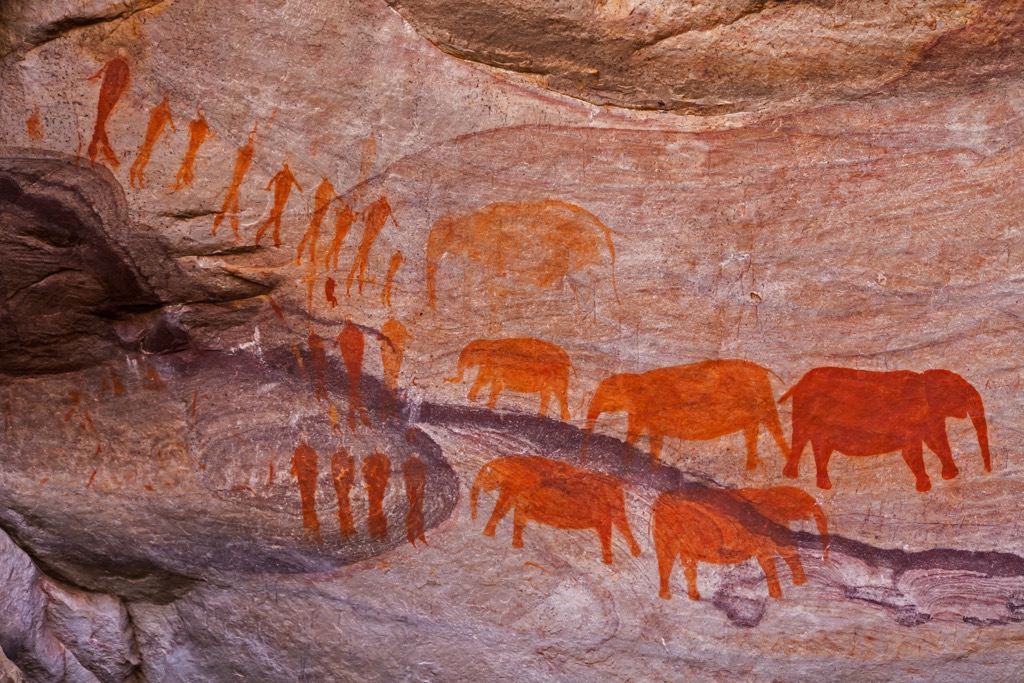
The Cederberg forms part of the Cape Fold Belt, a series of mountains that formed about 360 million years ago due to tectonic forces. The Cederberg is composed mainly of sandstone and shale rocks that belong to the Table Mountain Group, a geological formation that also includes the famous Table Mountain in Cape Town.
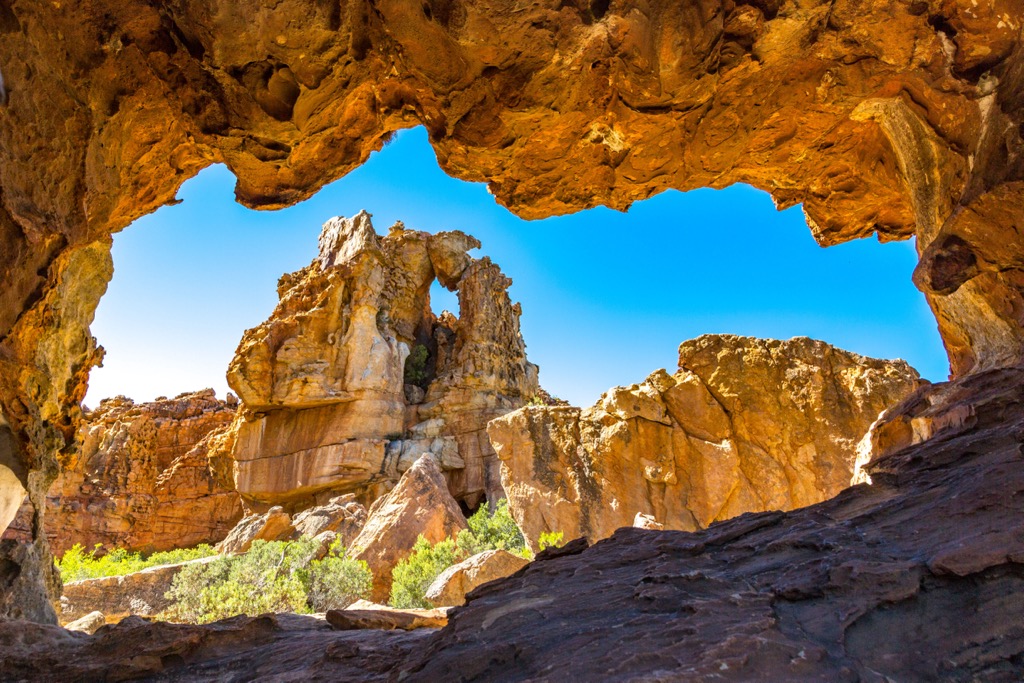
The geology of the Cederberg can be divided into two main groups: the Cape Supergroup and the Karoo Supergroup. The Cape Supergroup was formed about 600 to 700 million years ago by a succession of sedimentation of sandstone composed of silt, mud, and sand. The distinct reddish color of the rock is a result of minerals like iron and manganese that formed part of the sediments.
Meanwhile, the Karoo Supergroup was deposited over the Cape Supergroup about 310 million years ago when the icy conditions subsided. It consists mainly of shale, sandstone, and carbon deposits like coal. Some of these carbon deposits have become extremely compacted over time, creating the diamonds that are one of South Africa’s economic engines.
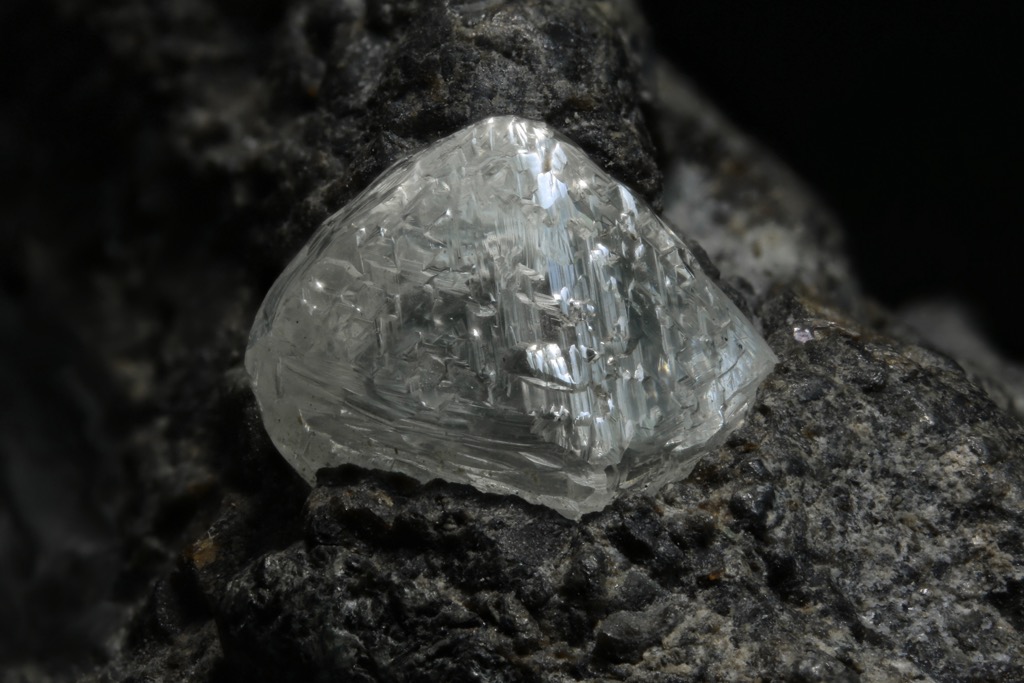
The Cederberg features exceptional botanical diversity, being part of the Cape Floral Kingdom of South Africa, one of the six floral kingdoms in the world. The predominant vegetation is Mediterranean fynbos in the wetter south and west, changing to semi-desert scrub in the north and east.
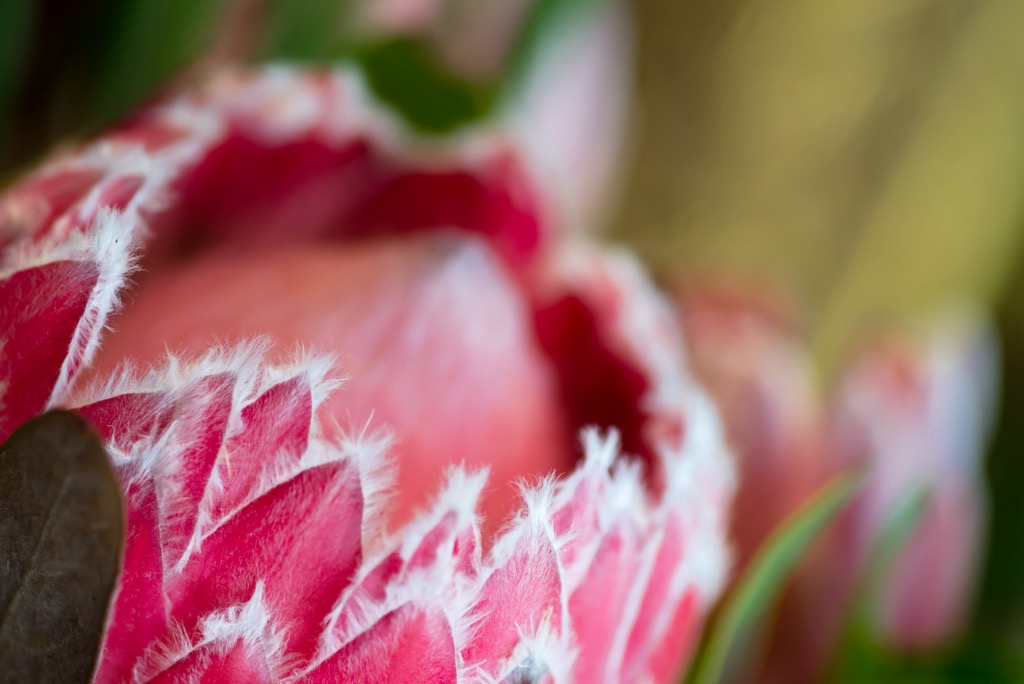
Fynbos is a fire-adapted vegetation type that consists of four main elements: proteas, ericas, restios, and geophytes. The fynbos ecosystem is a crucial part of the Cape Floristic Region, a UNESCO World Heritage Site and one of the world's biodiversity hotspots. Fynbos is home to thousands of endemic species, which are species found nowhere else on Earth.
In addition to Fynbos, other endemic and rare plants thrive in the Cederberg, such as the critically endangered Clanwilliam cedar. The Cederberg also produces the world-famous rooibos tea, a healthy and caffeine-free herbal infusion found only in this region.
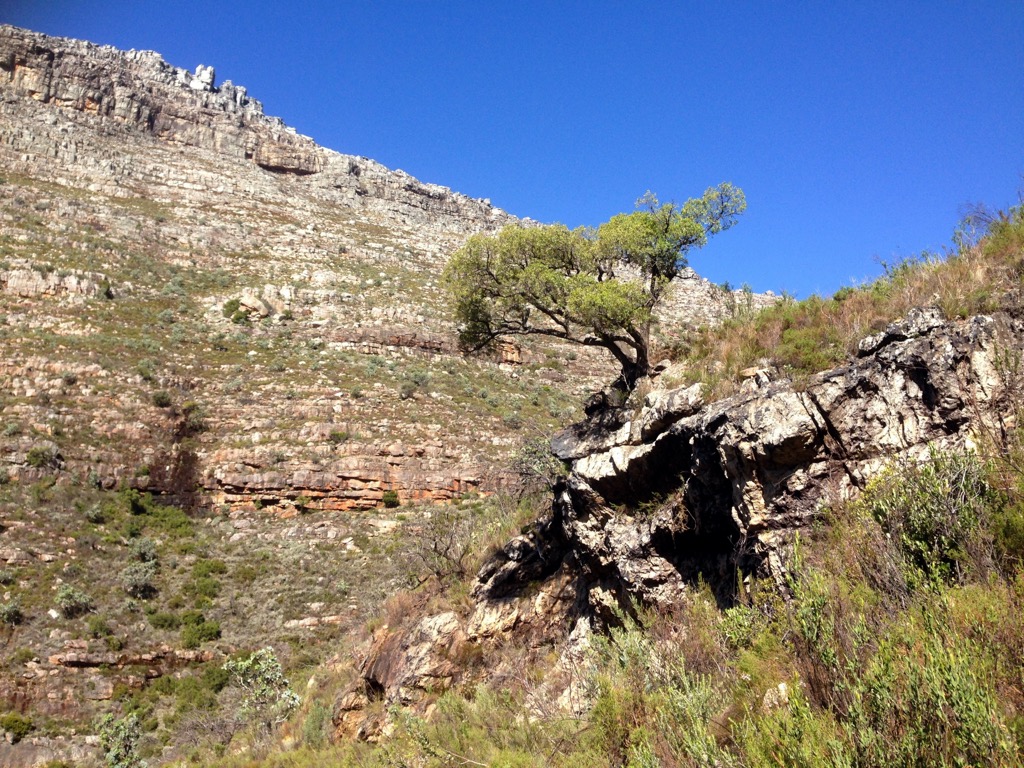
Wildlife is rich in this region, especially birds and small mammals. The region hosts more than 200 bird species, including raptors such as black eagles, jackal buzzards, and rock kestrels. Mammals that inhabit the Cederberg include baboons, klipspringers, dassies, caracals, mountain zebra, and porcupines.
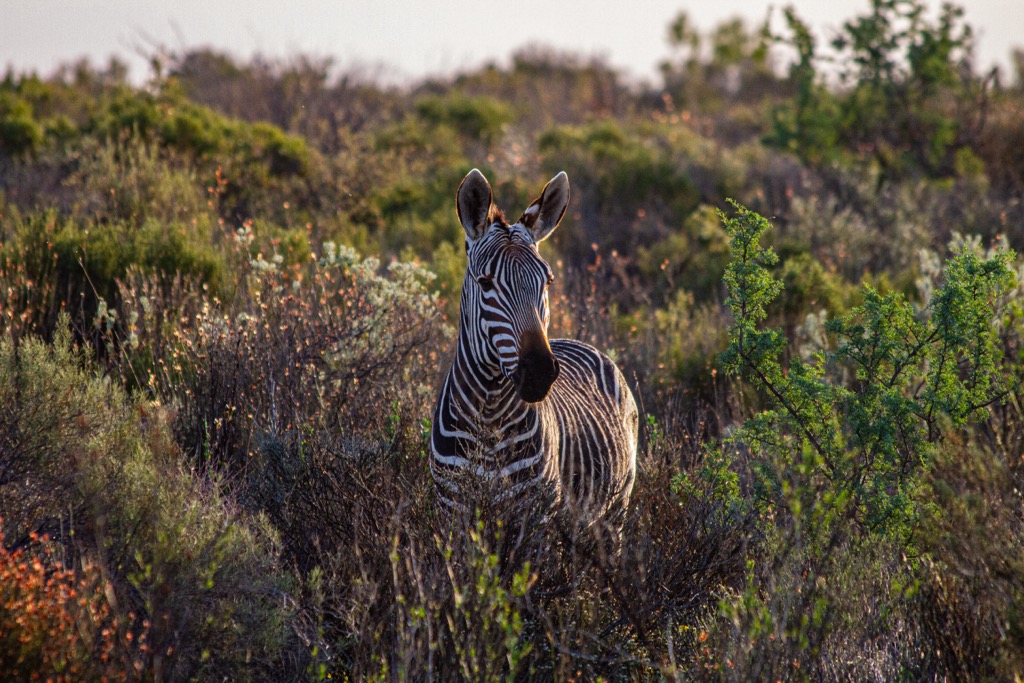
The original inhabitants of the Cederberg were the San people, who were hunter-gatherers, and the Khoikhoi people, who were pastoralists. They lived in harmony with the natural environment and left behind a rich legacy of rock art in caves and overhangs throughout the Cederberg. Some of the rock art images date from 2,000 years old.
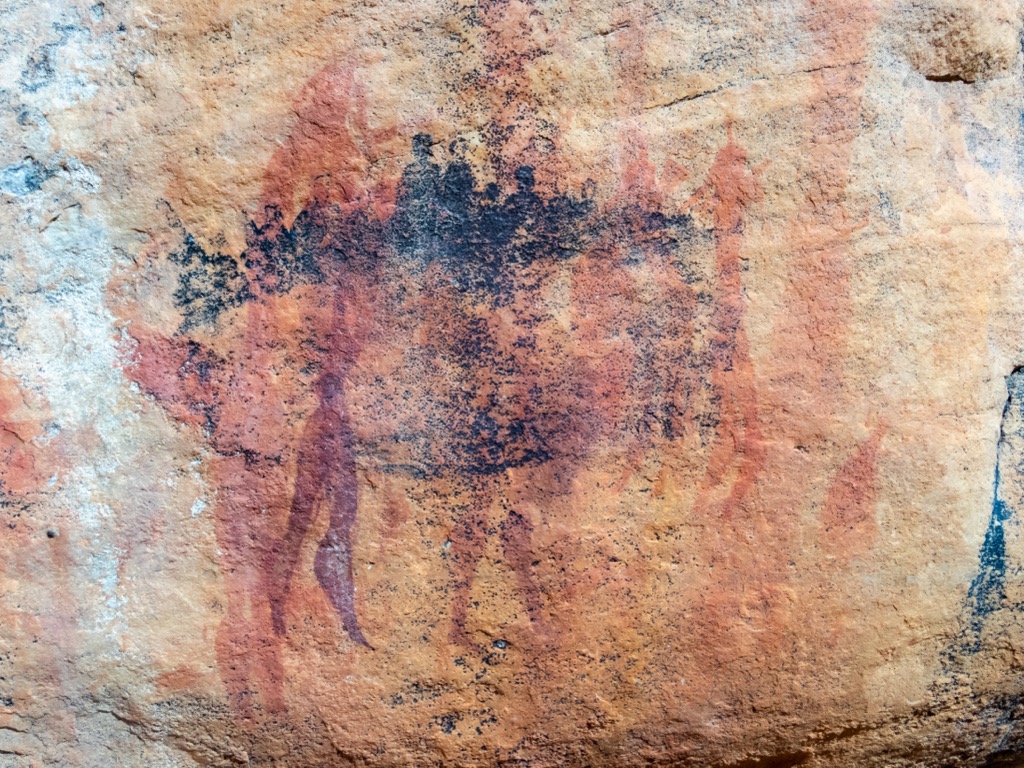
The name ‘Cederberg’ comes from the endangered Clanwilliam cedar tree. However, European settlement almost led to the destruction of the cedar trees, with thousands used for furniture, housing, and even telegraph poles. The cedar tree is now strictly protected, with only isolated trees surviving in hard-to-reach locations.
One of the earliest colonists to the Cape, Marthinus Oloff Bergh, led a scouting party north from Cape Town in about 1670 to explore the Cederberg. He came across the river running through the valley with herds of elephants on the riverbank. He named it the Oliphants River. Unfortunately, elephants were hunted out of this area by later settlers.
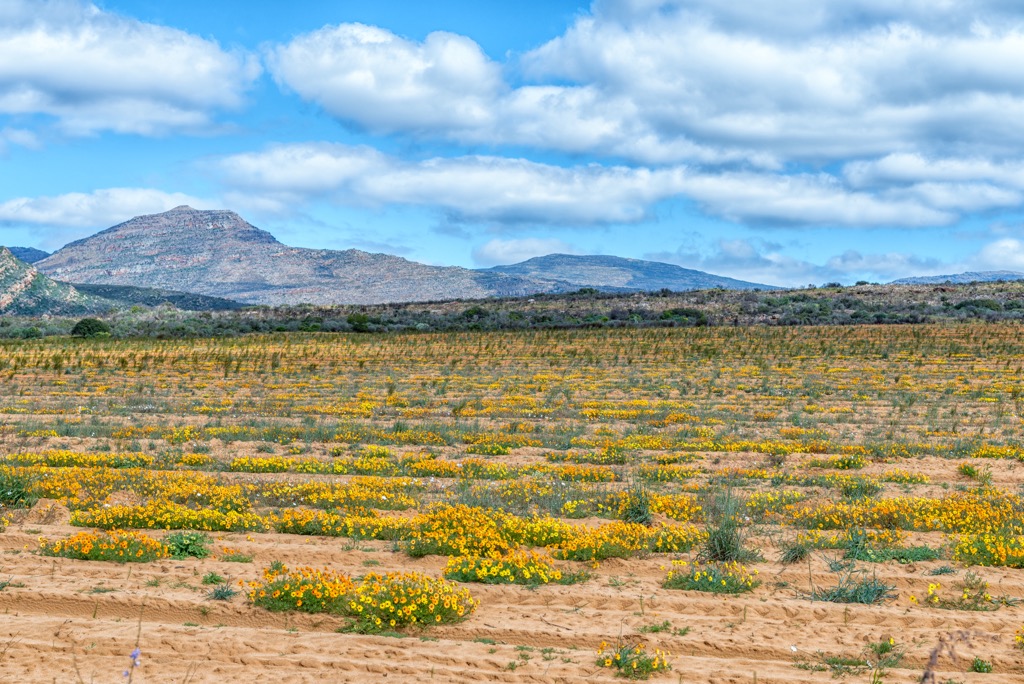
The Cederberg became a popular destination for adventurers and naturalists in the 19th and 20th centuries. Some notable visitors include Thomas Baines and Rudyard Kipling, who were attracted by the region’s scenic beauty, diverse flora and fauna, and cultural heritage.
The Cederberg Wilderness Area was established in 1973 to protect and conserve this unique landscape and its biodiversity. It was declared a World Heritage Site in 2004 as part of the Cape Floral Region Protected Areas.
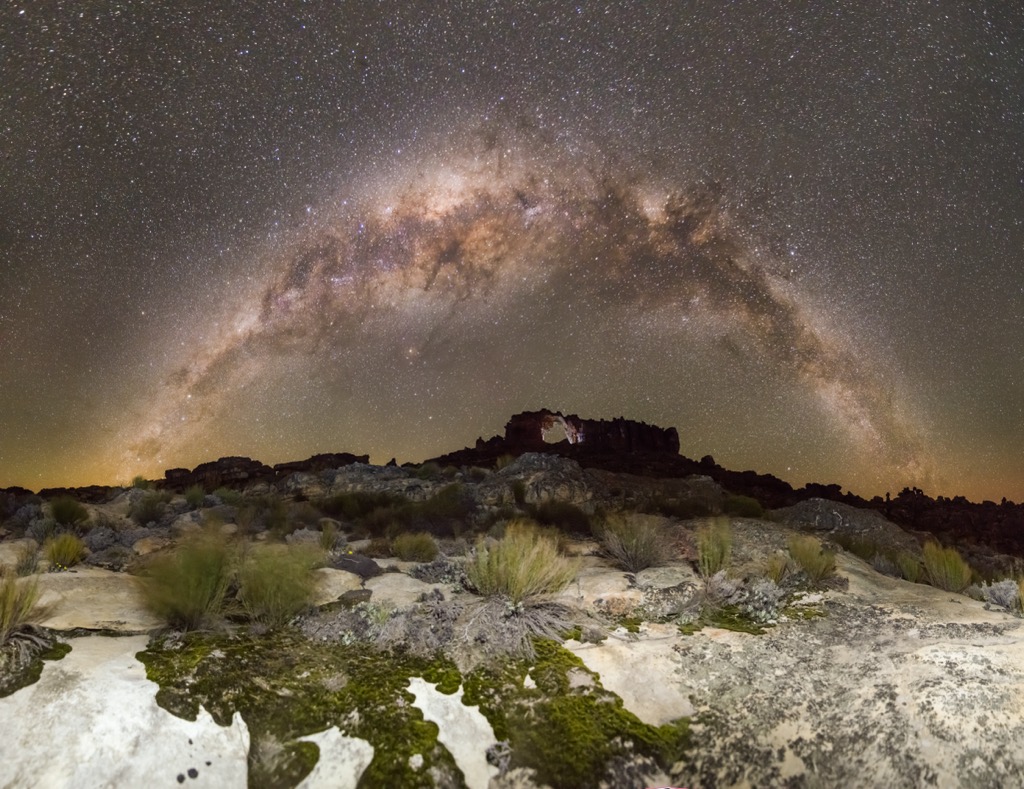
The Wolfberg Arch Hiking Trail is a 12 km (7 mi) hike through the Cederberg’s terrain of red sandstone formations, narrow cracks, and open plains. The hike's highlight is the Wolfberg Arch, one of the most impressive natural wonders in South Africa. This natural rock arch spans 30 meters (98 ft) and rises 15 meters (49 ft) on the edge of a cliff.
Another feature of this trail is the Wolfberg Cracks, a series of narrow gaps between huge boulders 3 km (1.8 mi) from the Wolfberg Arch. Once hikers emerge from the cracks, they will enter a flat and open area with bizarre rock formations that look like they belong on another planet.
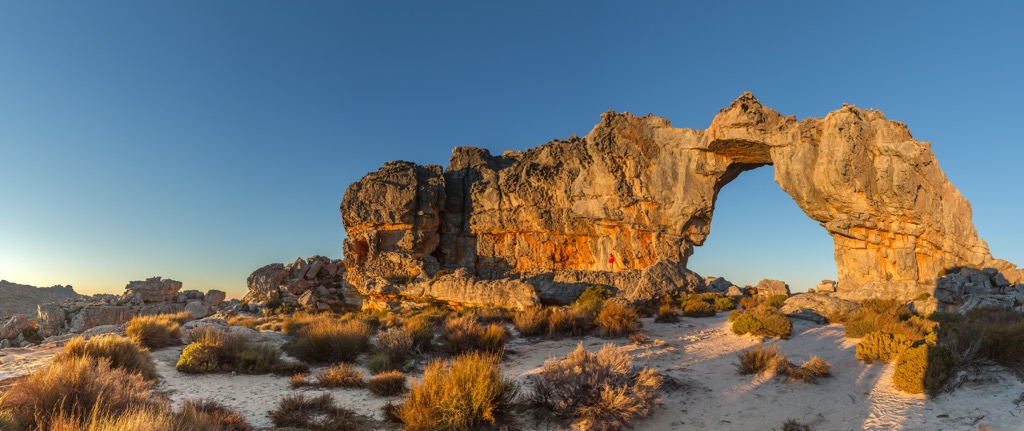
The Maltese Cross Walk is a popular 7 km (4.3 mi) hiking trail leading to a remarkable rock formation that resembles its namesake. The cross is about 30 meters (98 ft) high and stands out against the rugged landscape of sandstone cliffs and fynbos vegetation.
The trail's highlight, the Maltese Cross itself, is composed of red sandstone eroded by wind and water over millions of years. The cross is a testament to the geological history and beauty of the Cederberg region.
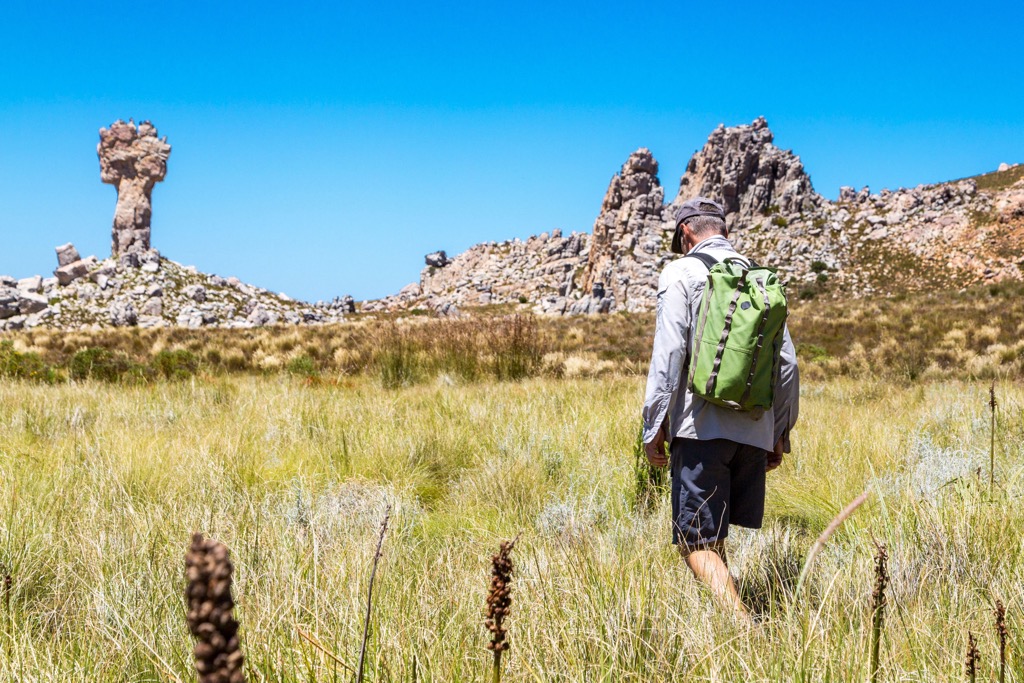
The Sneeuberg Hiking Trail is a 24 km (15 mi) and two-day hike that leads to the summit of the highest mountain in the Cederberg. The peak often has snow in winter and offers views of the surrounding landscape. On clear days, hikers can make out Table Mountain’s distinct shape in the distance.
The trail starts near the Driehoek Guest Farm and follows the Duiwelsgat Valley. Hikers then climb to a grassy plateau, where the trail continues to the Sneeuberg Hut for an overnight stay. The final stretch to Sneeuberg’s summit involves scrambling over rocks and boulders. The trail also has an alternative route that passes the Maltese Cross.
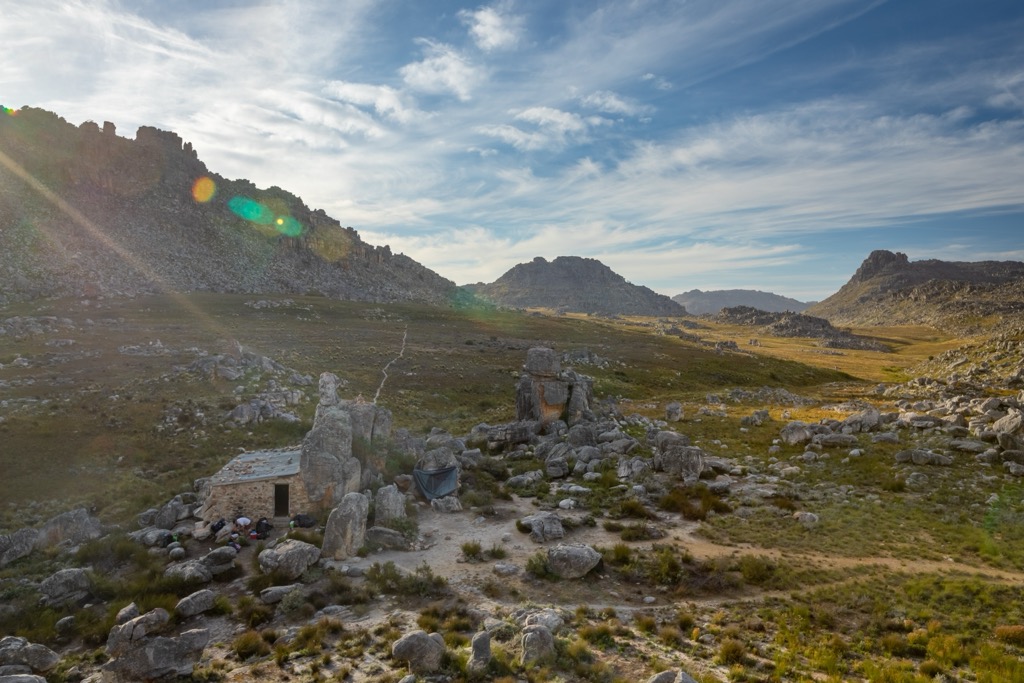
The main attraction of the trail is the summit of Tafelberg, the second-highest peak in the Cederberg range and one of the most recognizable mountains in the area because of its flat top. The Spout is another highlight of the trail, as it features a natural fountain that sprays water from a crack in the rock.
To reach the summit, hikers climb a steep gully on the backside of the mountain, using chains and a chimney to scramble up the last section. From Tafelberg’s summit, hikers can see various rock formations and the Pillar Box, an incredible column of rock that stands near the nek between Tafelberg and the Spout, the smaller mountain next to it.
Clanwilliam is a charming town in the Western Cape province, situated in the Olifants River valley and 230 km (134 mi) north of Cape Town. The town has a rich history and culture and is known for its rooibos tea production, rock art, and annual wildflower show.
Clanwilliam is the world’s Rooibos Tea capital. Rooibos is an herbal tea made from the leaves of the Aspalathus linearis plant, which grows in the region. Tourists can visit local farms and factories to learn about the tea-making process and enjoy tastings of different Rooibos blends.
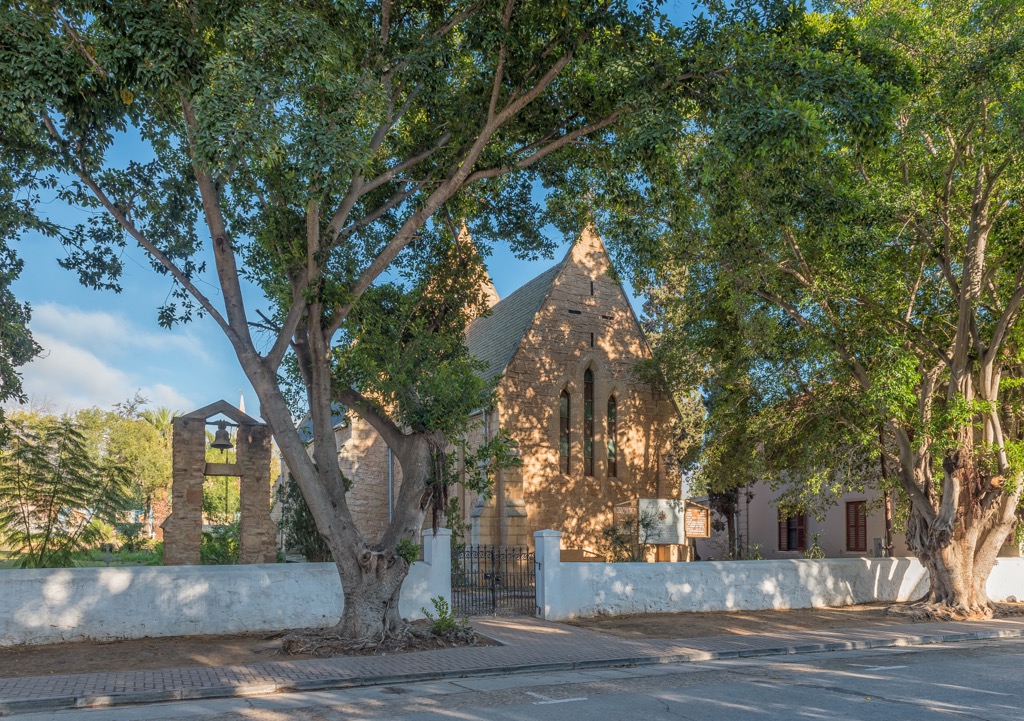
Clanwilliam is part of the Cederberg Wine Route; visitors can enjoy wine tastings, cellar tours, and breathtaking views of the vineyards. The region is known for producing unique wines due to its distinctive terroir.
The Ramskop Nature Garden features a diverse collection of indigenous plants, including various species of fynbos. It's an excellent place for a stroll, and the annual Clanwilliam Wildflower Show is held here.
Cape Town is the legislative capital of South Africa and the largest city in the Western Cape province. It’s located on the shore of Table Bay, at the northern end of the Cape Peninsula, which extends to the Cape of Good Hope.
Table Mountain National Park covers a large area of the Cape Peninsula and is home to Table Mountain and the Cape of Good Hope. The park is a UNESCO World Heritage Site and a biodiversity hotspot, with many rare and endemic plants and animals.
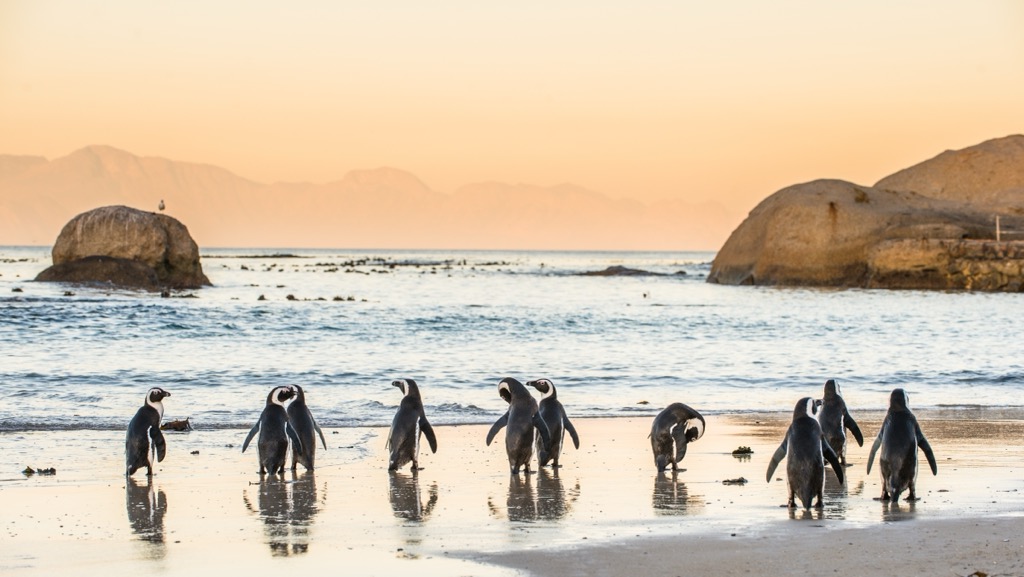
The world-renowned Kirstenbosch National Botanical Garden is set against the eastern slopes of Table Mountain. It features diverse plant species, indigenous fynbos, and themed gardens.
Cape Town boasts beautiful beaches. Camps Bay and Clifton are the spot for sunbathing and beach activities, while Muizenberg is known for its colorful beach huts and excellent surfing conditions.
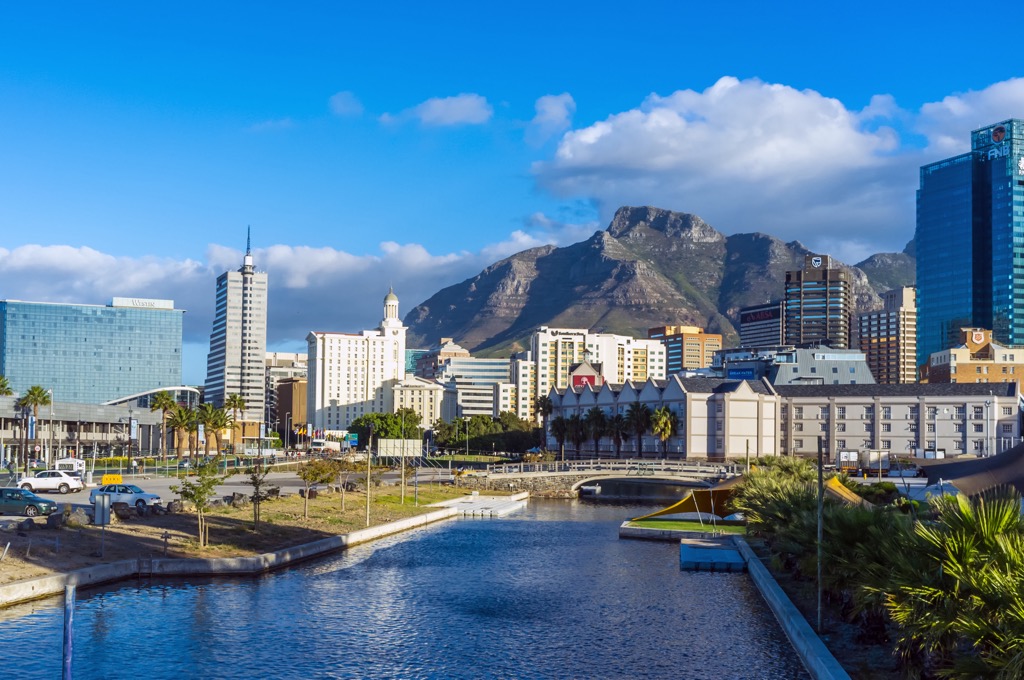
Explore Cederberg with the PeakVisor 3D Map and identify its summits.
